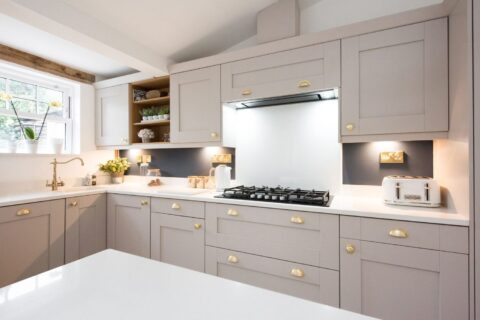How Light Affects Paint Colors in your Home
If you really want your home remodeling project to shine, choose your lighting before you pick out paint and carpeting. The lighting that you pick will set the mood and change the way you see your colors through your home. The Tuscan orange you chose for your family room can look like the perfect European sunset under perfected lighting conditions.
Think about the way that your colors, the natural sunlight, and your home light fixtures will combine within your home.
You must learn to accept that any surface or item will not look the same 24 hours a day. Some days her eyes will look brown, and some days her eyes could look bright green. Why does this all happen?
The way that we see color depends on two things:
1. The light that a surface absorbs. White absorbs no colors; Black engrosses all colors; blue absorbs red.
2. How light basics works. Natural sunlight will change during the day and is captive to the rooms location. Simulated light and fixtures change with the bulbs you choose.

How Sunlight Affects Colors
As the viewpoint of the sun and the amount of sunlight changes, so will the color of your room.
Always consider the Natural light when choosing colors for any space
East facing rooms: The eastern light is warm and yellow in the early mornings and becomes more blued later in the day. This is great for a yellow, orange, or red room.
West facing rooms: Although the morning may cast shadows and dull your colors, the dusk and evening light is warm and attractive. Whites and light neutral colors are best in the west.
North facing rooms: The lights in north facing rooms are blue and cool. Soft colors won’t show well, as where a bolder color would be ideal. Light colors will be over-powered. Use strong colors and focus on what the natural light provides.
South facing rooms: This may be the brightest room in your home. The high sun turns both cool and warm colors into a sparkling paradise. Dark colors will appear brighter and bright colors will practically burst!

How Light Bulbs Affect Color
The kind of bulb you use can change the color in a room.
Incandescent: This yellow, tawny lighting is warmed by reds, yellows, and oranges, bringing to light the richness of your choices. It may also mute any green or blue colors.
Fluorescents: This uniform and calm light develops blues and greens.
Halogens: This white light can look like natural light and make any color choice brighter. Using halogens will allow you to easily transition from natural to artificial lighting.
Compact fluorescent lights (CFLs): The CFLs can create blue white, warm white, or neutral light
Light emitting diodes (LEDs): You are able to purchase either cool or warm LEDs. The “smart” LED lights can be changed by remote. You can focus on the color of the sky in a sunset or a photo and make the bulb in the house the same exact color you pointed to.

Tips for Realizing the Color You Want
- Prime a piece of drywall or white construction paper. Paint squares of the color you want. Move the squares around your room through-out the day. Be sure to apply two coats of paint for the true color.
- Assess carpet samples at all light settings.
- Contractors will usually perform all painting, and then hang the lights. To see the result you are going to get, put the bulb you will be using in a floor or desk lamp. If you simply must know, ask your contractor to carefully cover your light fixtures when painting.
- Keep in mind that synthetic light and natural light will cooperate at certain times of day, especially in the summer when the evening is longer. Turn on your lights in the day to see how a color will look.
- Paint sheens will also affect your color choices. A gloss finish will reflect light and change a color. A flat paint finish has no reflective properties and will help the true color shine under any lighting conditions.
- A light wall color can show the color of your carpets. A bright green rug for example can give a greenish tone to your walls.





